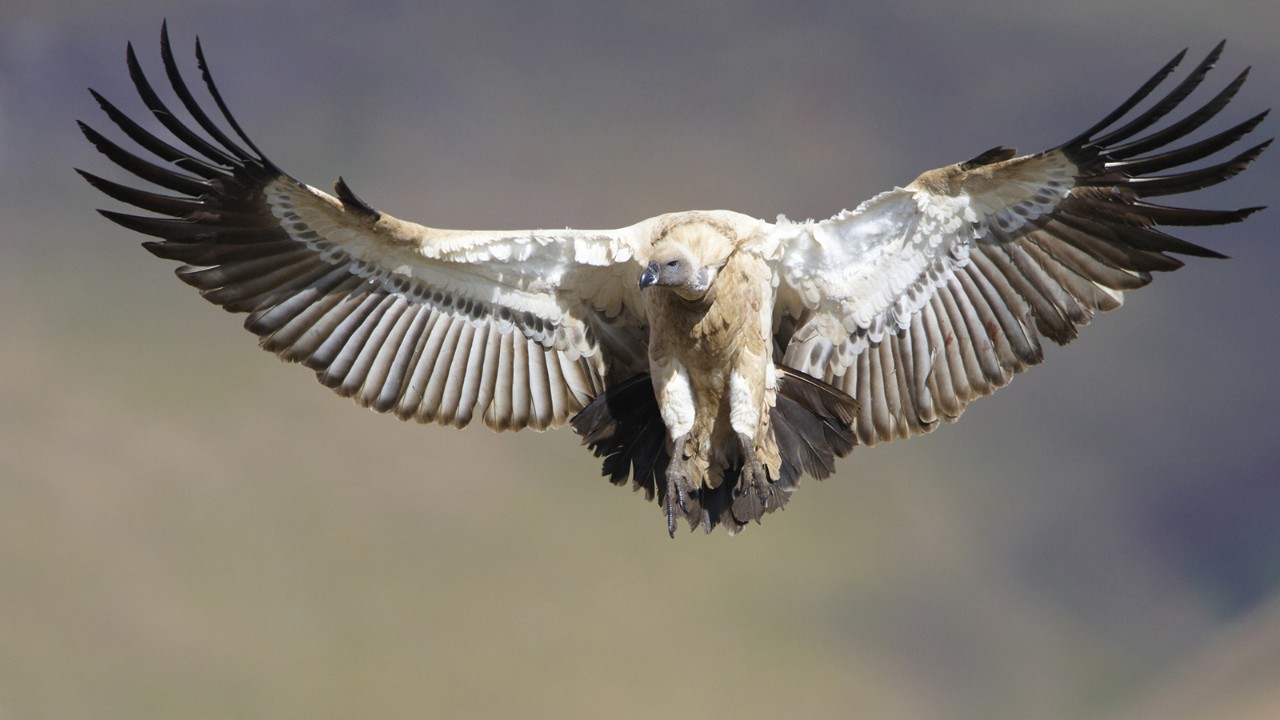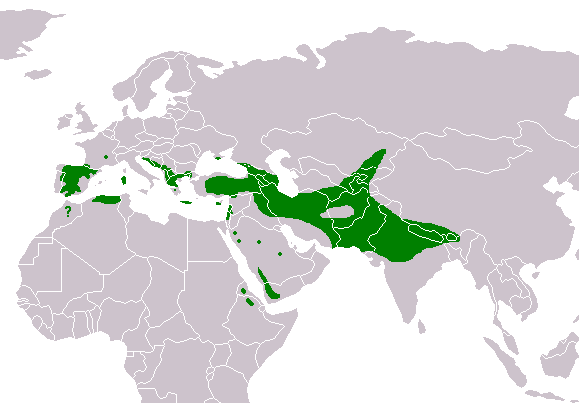Gyps Vulture Foraging Methods Key to Future Re-Population
Gyps Vulture Foraging Methods Key to Future Re-Population

Griffon vulture (Gyps vulvus)
Image source: https://kids.nationalgeographic.com/explore/nature/vultures/
General Vulture Information
Vultures feed on animal carcass. They are vital to their ecosystem, as they compete with other scavengers and their digestive system uniquely digests carcasses, decreasing disease. Anthropogenic dietary toxins are the main cause of decline for 88 percent of vulture species, with focus on vultures of South Asia and Northern Africa. As a result, other scavengers disrupt the ecosystem and spread diseases to other animals and even humans. Understanding vulture survival demands is useful for potential human involvement in vulture re-population.

Range of Griffon vulture
Image source: https://en.wikipedia.org/wiki/Griffon_vulture
Gyps vulture foraging methods
The article focuses on the food foraging methods of the Gyps vultures, which are local to Southeast Asia and populations have been impacted by dietary toxins. Gyps vultures forage daily by flying overhead until they spot carrion, at which point they will dive to the food to eat. They rely on both direct sight and observation of other vultures within their kettle to locate carcasses. The ladder refers to the process in which an individual will observe another vulture begin to dive for a carcass and proceed to follow the diving vulture to the food source. Due to the Gyps vultures’ large size and position in the sky, the distance at which they can observe other vultures, or sensing radius, is much larger than the distance at which they can identify a carcass on land. This sensing-radius is expected to be between 4 km and 10 km while, the distance at which they can identify a carcass within 0.3 km. The Gyps vultures are therefore more reliant on their ability to observe other vultures rather than their own identification of carcasses on land.
What does that mean?
Humans can aid the re-population of Gyps vultures in multiple ways.
Ban dietary toxins and raise vigilance against their use.
Dietary toxins, introduced by poachers, have been the largest source of vulture population decline in the past 60 years. Since 1950, regulations have been made to prohibit their use, but still they are an issue. Cracking down further on this issue would diminish future attacks on the vulture populationDirectly reintroduce vultures to the region (from rehabilitation facilities etc). For most successful survival, introduce many Gyps vultures to a small region rather then dispersing them across the entire regions that they exist. Rather than bringing greater competition for food sources, this will increase the chances of the vultures even finding food since they are dependent on observing each other for foraging. When the population is large enough that competition becomes an issue, they will spread themselves.
Sources
- Buechley, Evan R., Sekercioglu, Cagan, H. (2016) The avian scavenger crisis: Looming extinctions, trophic cascades, and loss of critical ecosystem functions. Biological Conservation. 198, pg 220-228
- Demerdzhiev, Dimitar, Hristove, Hristo, Dobrev, Dobromir, Angelov, Ivaylo, and Kurtev. Marin. (2014) Long-term Population Status, Breeding Parameters and Limiting factors of the Griffon Vultures (Gyps fulvus Hablizl, 1783) Population in the Eastern Rhodopes, Bulgaria. Terrestrial Ecology and Behavior. 66, pg 373-384
- Jackson, Andrew L., Ruxton, Graeme D., Houston, David C. (2008) The effect of social facilitation on foraging success in vultures: a modelling study. Biology Letters. 4, pg 311-313